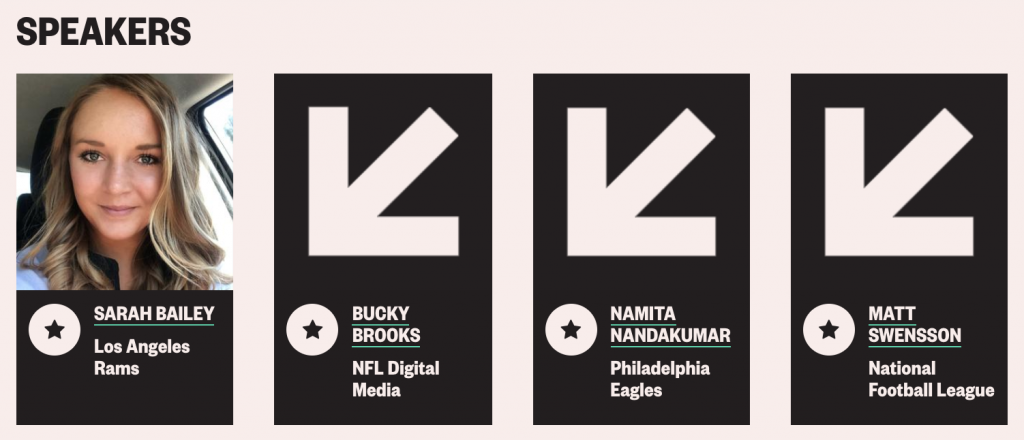I attended SXSW 2019 with my employer Sprinklr, and one of the sessions I got a lot out of was titled How Data is Revolutionizing the NFL. I took notes on paper and now that I’m back in the office, I transcribed some of the most interesting notes from the session and thought I’d share them here.
I’m not a football fan, but I love data analysis, and this session was a lot of fun. I think there’s a lot here that can be a source of inspiration for work in just about any sector, especially work that involves data.
* Each player has an individual game plan for each game (I didn’t realize that but of course it makes sense. When I put my work to-do list on my calendar, that makes me feel a little like I’ve got an individual game plan in support of my team’s plan.)
* LA Rams analytics team has 3 people: a forecaster, a data architect, and a front end developer for internal systems.
* Whether it’s today or the 90’s before there were analytics teams, there have always been people looking at data, looking at probabilities, and trying to help teams make good decisions
* When you see players who are successful, you look to see if you can discover any new traits they have. Then you can look to find other people who have those traits as well but who may have missed other benchmarks and thus not been discovered.
* One person can’t do analysis of all the data available, but if the work is documented and reproducible, then you can come back later and repeat it, or pick it up again to iterate with new data and knowledge. As long as you’re iterating in your analysis, that’s good.
* These analysts are working with R, Python, SQL databases, and spreadsheets are often the final product that’s sent to someone
* You’re not going to be 100% correct in your forecasts, in fact your failure rate is going to be very high – and you just have to get used to that
* Much of the analytics are used for tracking player workload for optimization (makes me think about capacity management in an information worker’s worklife)
* The NFL is using data to try to make fans smarter, so they can hang out with their friends and say “you should look out for this when the game is being played.” When you put the names of receivers and who’s covering them up on the screen, people love that. (cool validation of this as a commercially viable value add)
* For QBs air yards is a key stat. Everything these days is a quick, controlled game. We’re asking QBs to throw shorter passes and they should have about 60% pass completion rate
* Data science is a great place for people from diverse backgrounds to showcase your abilities by analyzing public data and find new perspectives. You can showcase your abilities, get attention for it, demonstrate, show your work, share your code
* Communication is super important. As an analytics person, you should be able to translate your work to anyone who could use it. That’s just as important as the ability to do the work itself. (I’m pretty sure it was Namita Nandakumar who said that.)
* People think stats are going to tell you something dramatically different than what you think – but they often don’t. They often tell you something smaller, like who on your team has the potential to play a larger role.
* You can support people moving toward more statistical thinking in an incremental fashion: show one success first, then move toward more grey areas
* Having discipline in this job is key because there are so many interesting things you could be analyzing, you must constantly assess and reassess projects
Those were my notes, I hope you find them useful as well!
